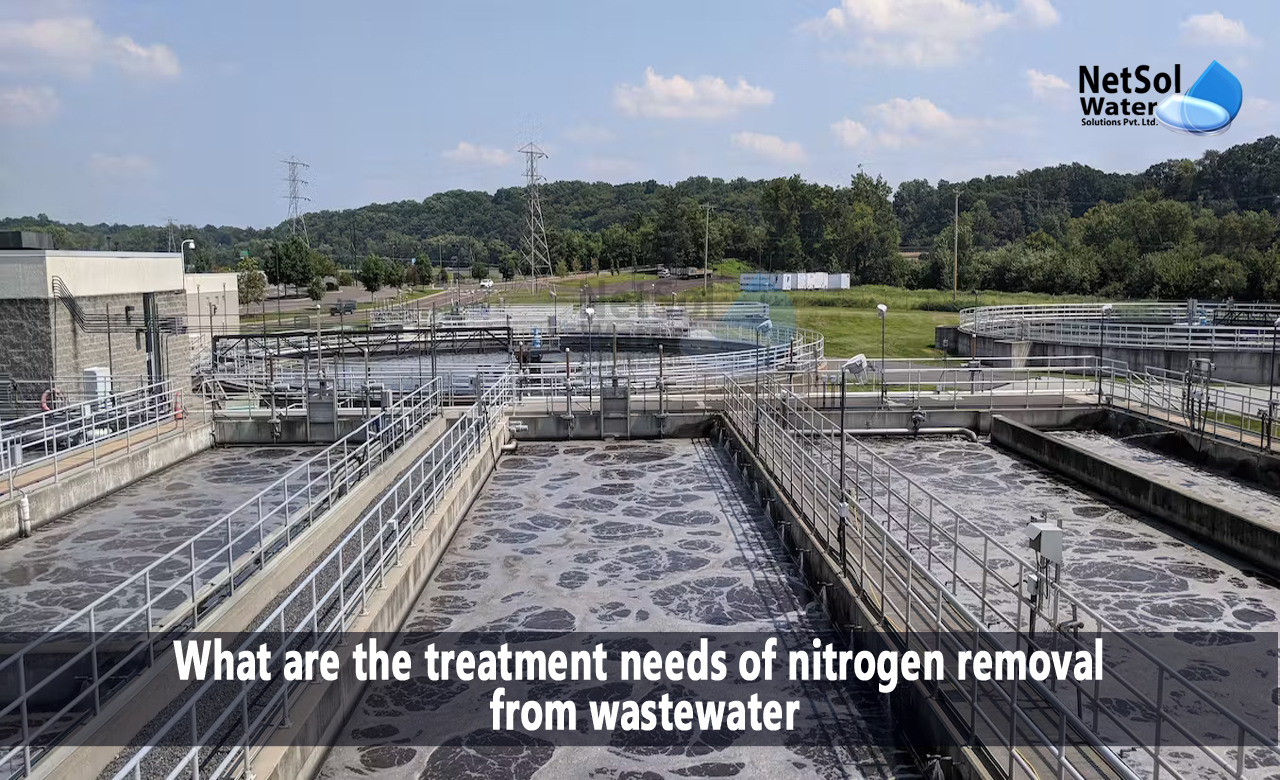What are the treatment needs of nitrogen removal from wastewater?
Preserving the environment's quality and ensuring public health requires effective wastewater treatment. Nitrogen is one of the many toxins found in wastewater that can be very problematic. A surplus of nitrogen in water bodies can cause eutrophication, toxic algal blooms, and deteriorated water quality, among other environmental problems. This blog post will discuss the requirements for treating nitrogen removal from wastewater, with an emphasis on the importance of managing nitrogen, different treatment approaches, and the difficulties in reducing nitrogen pollution.
Significance of Nitrogen Removal
Wastewater from sources such home sewage, industrial effluents, and agricultural runoff frequently contains nitrogen molecules, mostly in the form of ammonia (NH3) and nitrate (NO3-). Numerous issues with nitrogen pollution relate to the environment and public health:
· Eutrophication: The growth of algae and aquatic plants can be encouraged by an excess of nitrogen, which results in eutrophication. As a result of this process, oxygen levels are reduced, creating "dead zones" where aquatic life cannot survive.
· Hazardous Algal Blooms: Waters high in nitrogen can cause harmful algal blooms, which release toxins that endanger aquatic ecosystems and endanger human and wildlife health.
· Water Quality Degradation: High nitrogen levels in recreational or drinking water sources can cause health problems and require expensive treatment procedures to guarantee clean water.
· Regulatory Compliance: Strict rules controlling the amount of nitrogen in wastewater discharges have been developed in several places. There may be penalties and legal repercussions for noncompliance.
Methods of Nitrogen Removal
There are numerous techniques for taking nitrogen out of wastewater. The source of the wastewater, its nitrogen level, and regional environmental laws all influence the technique of choice. Typical methods for eliminating nitrogen include:
· Biological Nitrogen Removal: This process uses microorganisms to create nitrogen gas, which may be safely discharged into the atmosphere, from ammonia and nitrate. There are usually stages of nitrification and denitrification in biological processes.
· Chemical precipitation: In wastewater, chemicals such as iron or aluminium salts are added to create insoluble compounds with ammonia and nitrate that can be filtered or sedimented out. Although chemical precipitation works well, it can be expensive.
· Constructed Wetlands: Constructed wetlands offer an ideal setting for the conversion of nitrogen compounds. They are frequently modelled after natural wetland ecosystems. These solutions are both eco-friendly and efficient.
· Ion Exchange: By substituting other ions for nitrogen ions in wastewater, ion exchange resins are used to remove nitrogen ions from it selectively. Although resin regeneration could be necessary, this procedure is very successful.
· Membrane Bioreactors (MBRs): MBR technology efficiently removes nitrogen and other impurities by combining biological treatment procedures with membrane filtration.
Challenges and Considerations
Nitrogen removal presents certain difficulties even though it is essential for preserving environmental health and water quality:
· Efficiency: Depending on a number of variables, such as pH, temperature, and the kind of nitrogen in the wastewater, removing nitrogen effectively might be difficult.
· Cost: Because chemicals must be purchased and disposed of, many nitrogen removal techniques, including chemical precipitation, can be costly.
· Sludge Management: Techniques such as chemical precipitation may produce sludge, which must be disposed of properly. Sludge handling can be expensive as well.
· Energy Consumption: Since aeration and mixing are necessary for biological nitrogen removal processes, they can be energy-intensive. It is essential to balance treatment efficiency with energy utilisation.
· Regulatory Compliance: In order to stay out of trouble legally and preserve the purity of the water, it is essential to follow strict environmental rules and guarantee regular nitrogen removal.
Conclusion:
An important part of practicing appropriate environmental management is removing nitrogen from wastewater. When too much nitrogen is released into natural water bodies, it can cause eutrophication, toxic algal blooms, and deterioration of the water quality. Biological processes, chemical precipitation, built wetlands, ion exchange, and membrane bioreactors are a few examples of efficient nitrogen removal techniques that provide solutions for this problem. Regulatory compliance, energy consumption, sludge management, efficiency, and cost are all critical considerations when developing a complete and long-lasting nitrogen removal system. We can help create a more sustainable future, healthier ecosystems, and cleaner water by attending to the nitrogen removal treatment demands.



